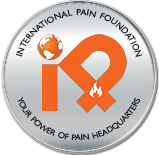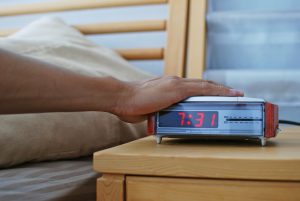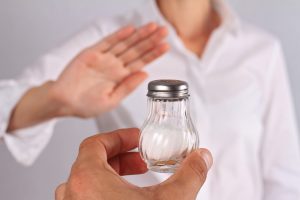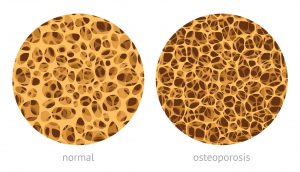You may have heard about healthy fats and their ability to help lower cholesterol. However, did you know that healthy fats may also help to relieve chronic pain associated with obesity?
What are healthy fats?
There are two main types of fats. Saturated fats are considered unhealthy fats since they have been found to increase risk of cholesterol plaques in blood vessels. In turn, these plaques can increase risk of heart disease and stroke. Fatty meats, fried foods, cream, butter, and some baked goods all contain unhealthy fats.
Unsaturated fats are considered healthy fats since consuming them in place of saturated fats have been found to lower risk of heart disease. Plant-based foods such as nuts, seeds, olive oil, olives, and avocado as well as fatty fish like salmon, lake trout, and sardines contain unsaturated fats. The Mediterranean diet contains nearly half of all calories consumed coming from such healthy fats. The Mediterranean diet involves not only consumption of healthy fats, but also eating:
seeds, olive oil, olives, and avocado as well as fatty fish like salmon, lake trout, and sardines contain unsaturated fats. The Mediterranean diet contains nearly half of all calories consumed coming from such healthy fats. The Mediterranean diet involves not only consumption of healthy fats, but also eating:
- more plant-based foods such as fruits and vegetables
- replacing animal-based fats such as from red meats and butter with plant-based oils such as olive or canola oil
- consuming seafood and poultry at least twice a week
- Using herbs and spices to flavor foods instead of salt
How Do Healthy Fats Help with Pain?
Elevated levels of inflammation have been linked to both body fat and chronic pain. high levels of inflammation are suspected in those with obesity and chronic pain. A 2017 study in the journal Pain revealed that those obese adults that consumed a diet full of fish, fruits, vegetables, nuts and beans had significant health benefits such as reduced chronic pain. This reduction in pain is thought to be a result of the anti-inflammatory properties of such healthy fat-containing foods.
However, further studies will need to be done to determine if the inflammatory markers for this kind of pain is similar in adults of a healthy weight. It is unclear whether losing weight would further reduce pain in obese individuals. In the mean time, a diet full of healthy fats and plant-based foods can still be a great addition to any heart-healthy regimen.
Another way to relieve pain is to take a high quality supplement like Relocane by Vita Sciences. Relocane contains a powerful blend of ingredients such as turmeric, Holy Basil, Cetyl Myristoleate and MSM. Such ingredients can modulate a healthy immune inflammatory response in the body. In turn, minor aches, pains, and muscle cramps have found to have relief with Relocane.
For more information on the latest research and education on pain-related conditions, visit the US Pain Foundation or the International Pain Foundation. ![]()

-written by Staci Gulbin, MS, MEd, RD, LDN
Sources:
Chiu, S., et al. (2017 Feb 6) “Effects of a Very High Saturated Fat Diet on LDL Particles in Adults with Atherogenic Dyslipidemia: A Randomized Controlled Trial.” PLoS One, 12(2):e0170664.
Hooper, L., et al. (2016 April) “Reduced or Modified Dietary Fat for Preventing Cardiovascular Disease.” Sao Paulo Medical Journal, 134(2): 182-3.
Hooper, L., et al. (2015 June 10). “Reduction in Saturated Fat Intake for Cardiovascular Disease.” The Cochrane Database of Systematic Reviews, (6):CD011737.
Mayo Clinic (2016 May 3) “Mediterranean Diet: A Heart-Healthy Eating Plan.” http://www.mayoclinic.org/healthy-lifestyle/nutrition-and-healthy-eating/in-depth/mediterranean-diet/art-20047801
Medline Plus (2017 March 10) “Mediterranean Diet May Ease Chronic Pain of Obesity” https://medlineplus.gov/news/fullstory_164033.html

 1.) Lower your sodium intake. A recent study of the U.S. National Health and Nutrition Examination Survey looked at salt intake and high blood pressure, also known as hypertension. Between 1999 and 2012, the sodium intake of those with hypertension rose nearly 14-percent from 2900 to 3350 milligrams daily. The recommended sodium intake for those with hypertension is 1500 milligrams a day, while those without hypertension should limit intake to 2300 milligrams daily. It is important to note that that 2300 milligrams of sodium is equal to just one teaspoon of salt. Furthermore, reports show that three-fourths of the sodium most people consume daily is not from added salt. Instead, most excess sodium intake is from consuming processed food products. Therefore, it is important to limit prepackaged foods such as:
1.) Lower your sodium intake. A recent study of the U.S. National Health and Nutrition Examination Survey looked at salt intake and high blood pressure, also known as hypertension. Between 1999 and 2012, the sodium intake of those with hypertension rose nearly 14-percent from 2900 to 3350 milligrams daily. The recommended sodium intake for those with hypertension is 1500 milligrams a day, while those without hypertension should limit intake to 2300 milligrams daily. It is important to note that that 2300 milligrams of sodium is equal to just one teaspoon of salt. Furthermore, reports show that three-fourths of the sodium most people consume daily is not from added salt. Instead, most excess sodium intake is from consuming processed food products. Therefore, it is important to limit prepackaged foods such as: